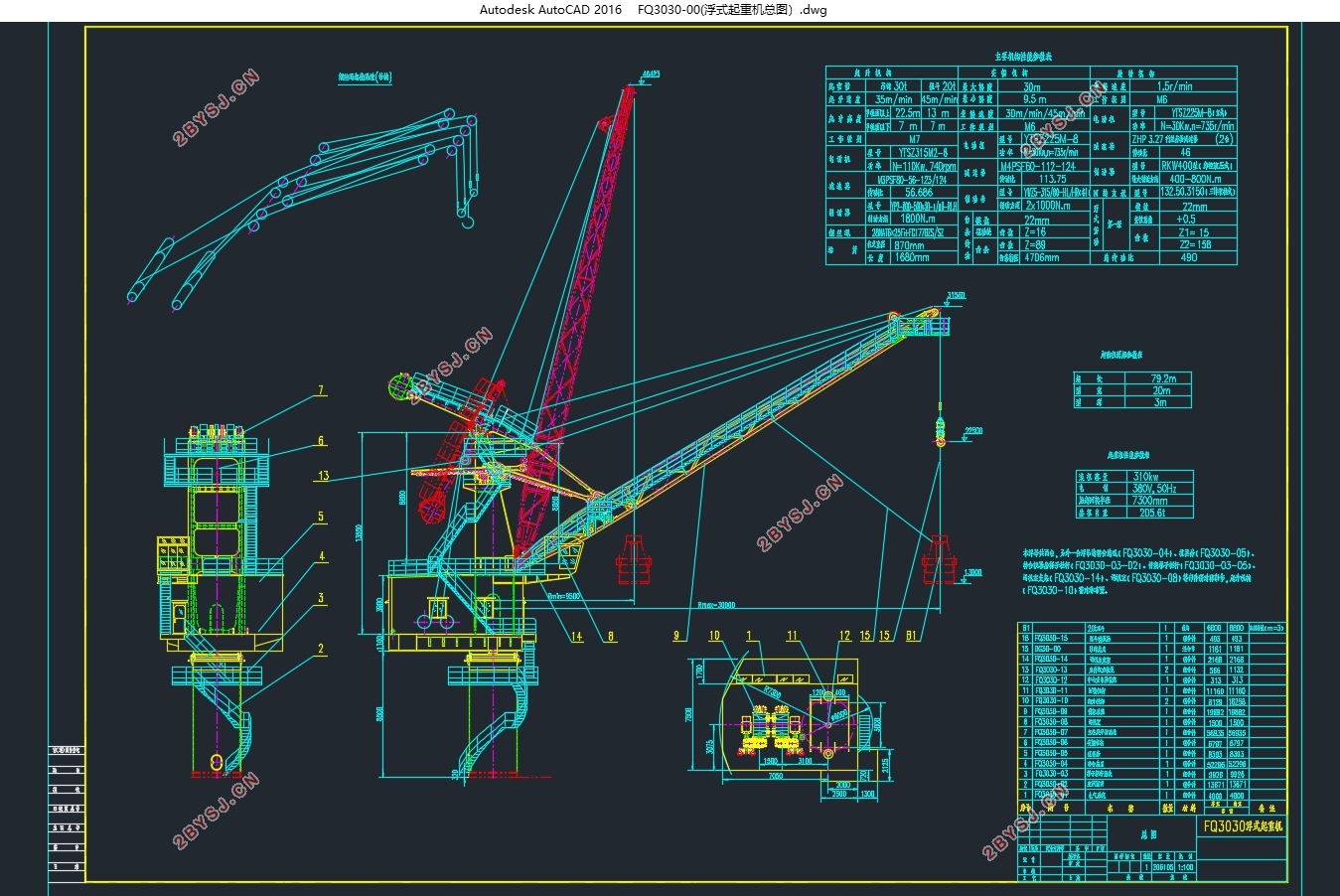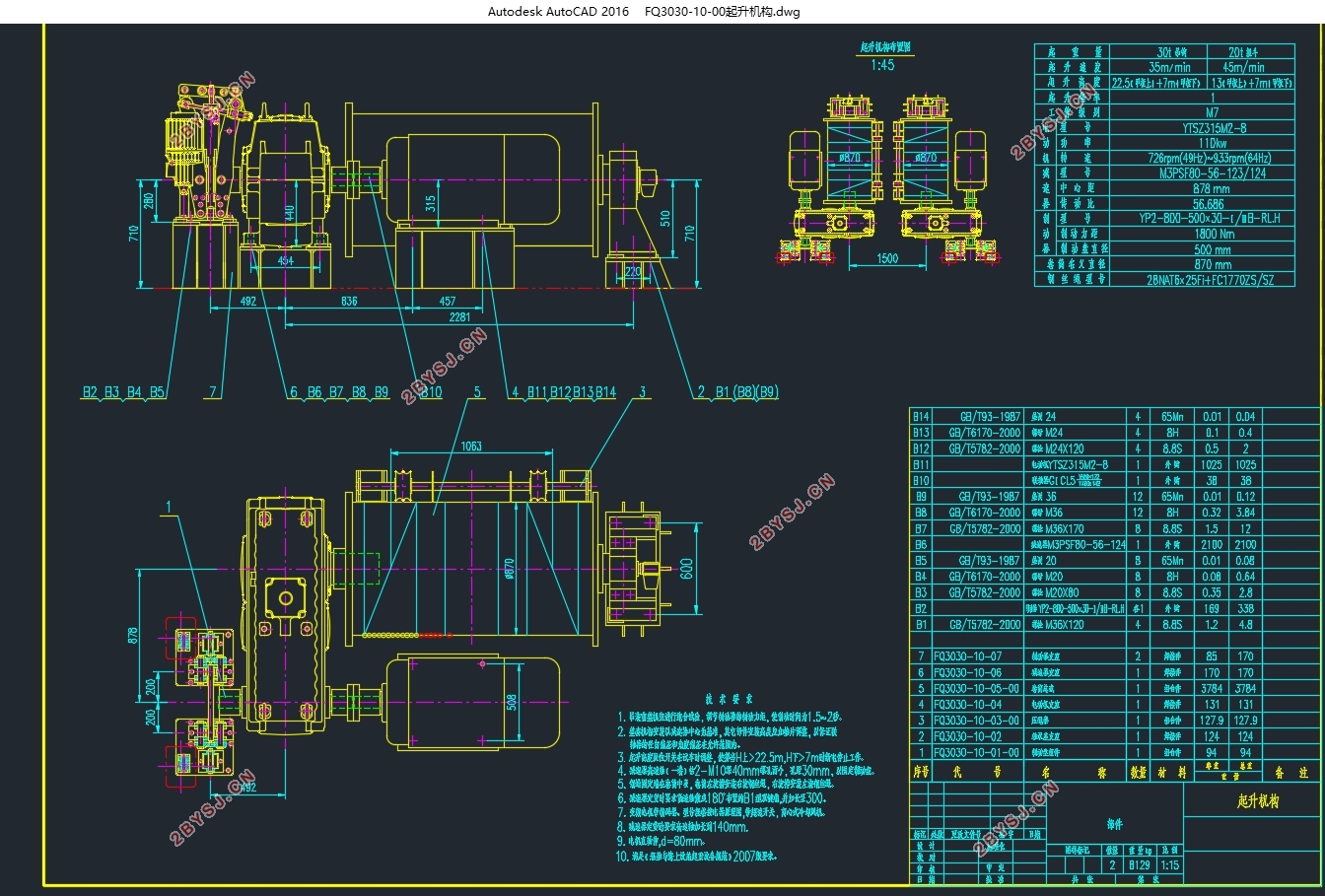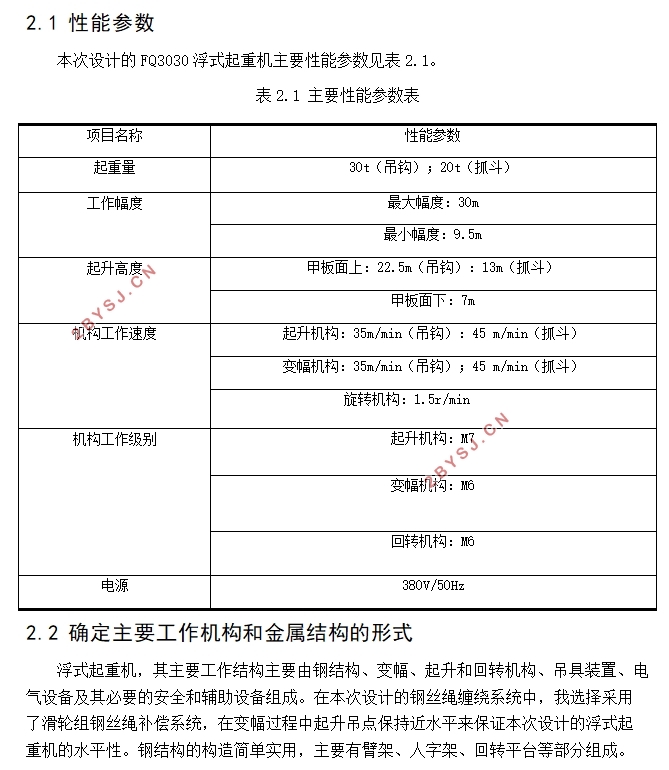FQ3030浮式起重机总体与起升机构设计(含CAD零件图装配图)
无需注册登录,支付后按照提示操作即可获取该资料.
FQ3030浮式起重机总体与起升机构设计(含CAD零件图装配图)(任务书,开题报告,论文说明书13000字,CAD图31张)
摘 要
近年来,伴随我国综合国力的不断进步,我国的起重机机械设备得到了飞跃的发展。浮式起重机可以进行岸与船、船与船之间的装卸作业,其自重轻,占地少,工作效率高,作业稳定性好,运转灵活,是内河湖泊理想的装卸设备,特别适用于码头疏浚和码头工程施工作业。
本文以FQ3030浮式起重机为例,叙述了浮式起重机总体设计的一般流程,同时对其起升机构进行了简单的设计计算,因此给出了总体及起升机构的CAD图纸。结论证明本文确定的浮式起重机全部各项参数,起升机构所选择的钢丝绳卷绕系统、电动机和减速器符合要求。
关键词:浮式起重机;总体设计及计算;起升机构设计及计算
Abstract
In recent years, with China's comprehensive national strength of the continuous progress ofChina's crane machinery and equipment has been leap in the development. The floating cranecan carry out the loading and unloading operation between the shore and the ship, the ship andthe ship, its light weight, small footprint, high working efficiency,good operation stability andflexible operation. It is an ideal loading and unloading equipment for the river and lake, Dredging and dock construction work.
In this paper, the FQ3030 floating crane, for example, describes the general design of the floating crane overall process, while its hoisting mechanism for a simple design calculation, so the overall and the lifting mechanism of the CAD drawings. It is concluded that all theparameters of the floating crane determined in this paper, the wire rope winding system, the motor and the gear reducer selected by the lifting mechanism meet the requirements.
Key words: floating crane; overall design and calculation; hoisting mechanism design and calculation
港口FQ3030浮式起重机总体设计
2.1 性能参数
本次设计的FQ3030浮式起重机主要性能参数见表2.1。
表2.1 主要性能参数表
项目名称 性能参数
起重量 30t(吊钩);20t(抓斗)
工作幅度 最大幅度:30m
最小幅度:9.5m
起升高度 甲板面上:22.5m(吊钩):13m(抓斗)
甲板面下:7m
机构工作速度 起升机构:35m/min(吊钩):45 m/min(抓斗)
变幅机构:35m/min(吊钩);45 m/min(抓斗)
旋转机构:1.5r/min
机构工作级别 起升机构:M7
变幅机构:M6
回转机构:M6
电源 380V/50Hz




目 录
第1章 绪论 1
1.1 课题的研究目的和意义 1
1.2 课题研究的内容 1
第2章 港口FQ3030浮式起重机总体设计 3
2.1 性能参数 3
2.2 确定主要工作机构和金属结构的形式 3
2.2.1 确定主要工作机构形式 3
2.2.2 金属结构选型 6
2.3 载荷的计算 7
2.3.1 自重载荷 7
2.3.2 额定起升载荷 8
2.3.3 垂直运动引起的动载荷 8
2.3.4 变速运动引起的载荷 10
2.3.5 风载荷 11
2.3.6试验载荷 17
2.4 稳定性计算 17
2.4.1 检验原则及方法 17
2.4.2 验算工况 18
2.4.3 三种工况的稳定性计算 18
2.5 水平性计算 20
2.6 不平衡力矩计算 21
第3章 起升机构设计及计算 22
3.1 起升机构概述 22
3.2 卷绕系统 22
3.3 吊载装置的选择 23
3.3.1 吊钩的选择 23
3.3.2 抓斗的选择 23
3.4 钢丝绳的计算 23
3.5 卷筒的计算 24
3.5.1 卷筒的直径 24
3.5.2 卷筒的长度 24
3.5.3 卷筒的壁厚及校核 25
3.6 电动机的选择 25
3.7 减速器的选择 26
3.8 静力矩的计算 26
3.9 制动器的选择 27
3.10 起、制动时间验算 27
3.10.1 起动时间的验算 27
3.10.2 制动时间的验算 28
3.11 电动机的发热验算 28
第4章 浮式起重机经济性分析 28
第5章 总结与展望 29
5.1 工作总结 29
5.2 工作展望 29
参考文献 30
致 谢 30
